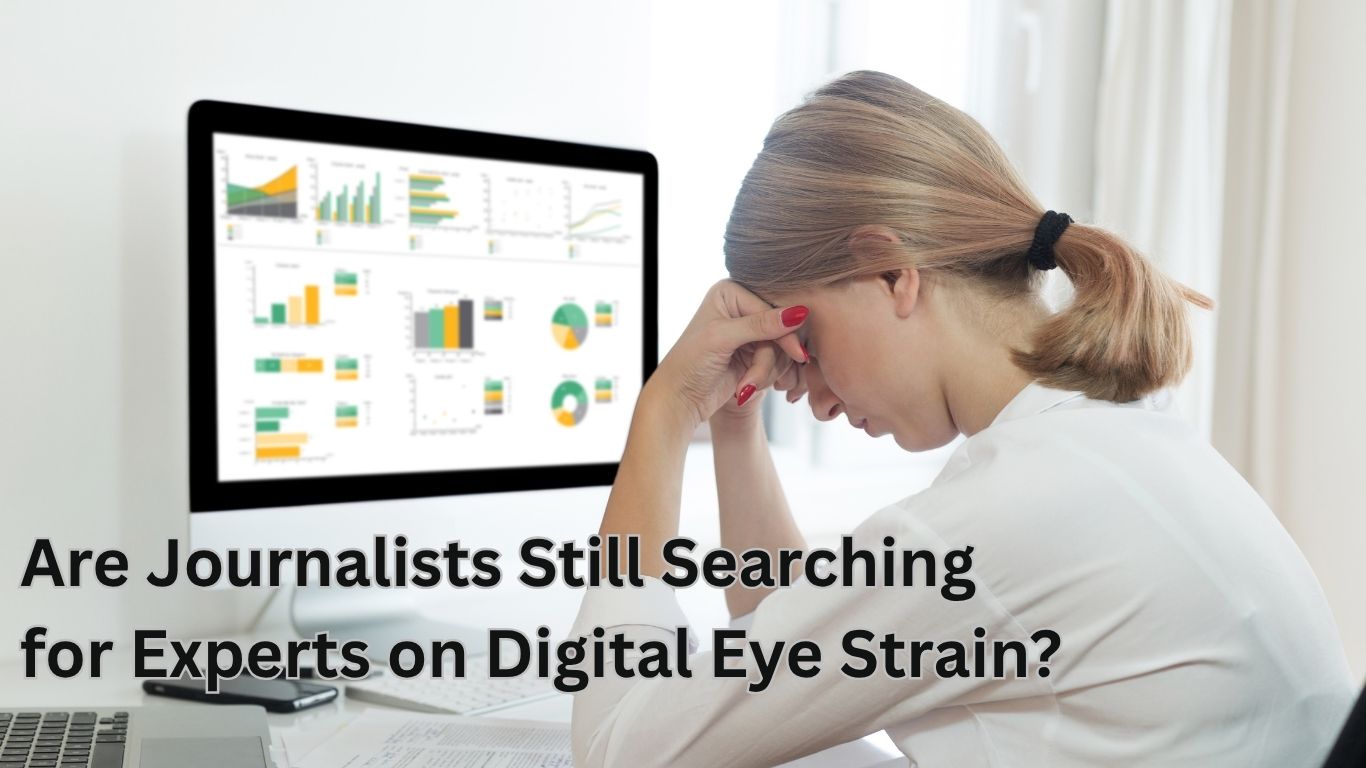“Digital eye strain” (a.k.a. computer vision syndrome) is a newsroom evergreen because screens are now part of work, school, entertainment, and even health tracking. Editors keep commissioning service journalism on what it is, what helps, and what’s hype—so they actively seek eye-care clinicians who can explain mechanisms and give safe, practical steps readers can use today.
Digital PR is how you turn that ongoing demand into repeatable features (and high-trust links) in outlets your patients already read.
Why eye-strain stories keep getting assigned
- Everyday relevance. Mainstream titles continue publishing explainer pieces on blurred vision, dryness, headaches, and screen ergonomics—precisely the “what to do right now” format that needs clinical voices.
- Myth-busting moments. Editors love evidence-based takes on trends like blue-light glasses, because readers are actively buying products and want clarity on what actually helps.
- New contexts, same problem. Hybrid work setups, kids’ devices, and wearables keep the topic fresh; journalists revisit it with seasonal hooks (back-to-school, winter dry air, travel).
What reporters want from eye specialists
- Mechanism over marketing. Briefly explain why eyes feel gritty, blurry, or sore—blink rate, tear-film disruption, accommodation demand, poor lighting—without selling products. Quotes like these drop straight into copy.
- Balanced, actionable steps. Guidance such as environmental tweaks, blink strategies, lubricant drops, and simple break routines (e.g., the 20-20-20 rule) fits service-journalism templates when framed as education, not individualized care.
- Clear boundaries and safety notes. Flag red-flags (“see your clinician if…”) and who a tip doesn’t apply to. This makes your line publishable in family-audience outlets.
The assignment shapes you can own
- “Do this, not that” explainers: positioning, lighting, font/contrast, blink practice, artificial tears—what helps and when to see a pro.
- Product reality checks: blue-light filters, screen modes, humidifiers, warm compresses—what these actually do (and don’t).
- Work & school pieces: hybrid-work setups; kid-safe habits; gaming and VR/AR comfort tips.
Make your quotes “paste-ready” (editor’s checklist)
- Answer first (one sentence, plain English).
- Mechanism in a line (what’s happening to the tear film/focus muscles and why).
- Do / avoid / see a clinician if… (education only).
- Source hygiene (reference accepted guidance when relevant).
That format mirrors how wellness and tech editors structure eye-strain stories.
Why use Digital PR (not ads) for eye-strain coverage
- Trust you can show. Being quoted by recognizable outlets is third-party proof for cautious patients and referrers—and it strengthens your brand beyond what ads can do. Linkifi’s program is built to land top-tier editorial features, not low-tier blog mentions.
- White-hat SEO upside. Editorial stories typically include contextual backlinks. Those signals help the right clinic pages (services, clinician bios, booking) rank—safely and over time.
- Momentum with editors. Fast, clean, useful quotes get re-used.
Put each mention to work (so it helps patients and search)
- Add an “As Seen In” strip to your homepage, dry-eye/service pages, and clinician bios. (Try our FREE Press Badge Maker)
- Post the article to your Google Business Profile with a patient-friendly takeaway.
- Drop the quote into appointment reminders for device-heavy patients (education only).
- Train front-desk teams to reference the piece in follow-ups and referral emails.
These simple steps turn visibility into patient confidence—and they compound.
Bottom line
Journalists are still hunting for credible voices on digital eye strain because readers face it daily—and they want practical, safe steps. Package your expertise the way editors work, and you’ll become the line that anchors their stories.
Find out more about Eye Clinic Digital PR.



